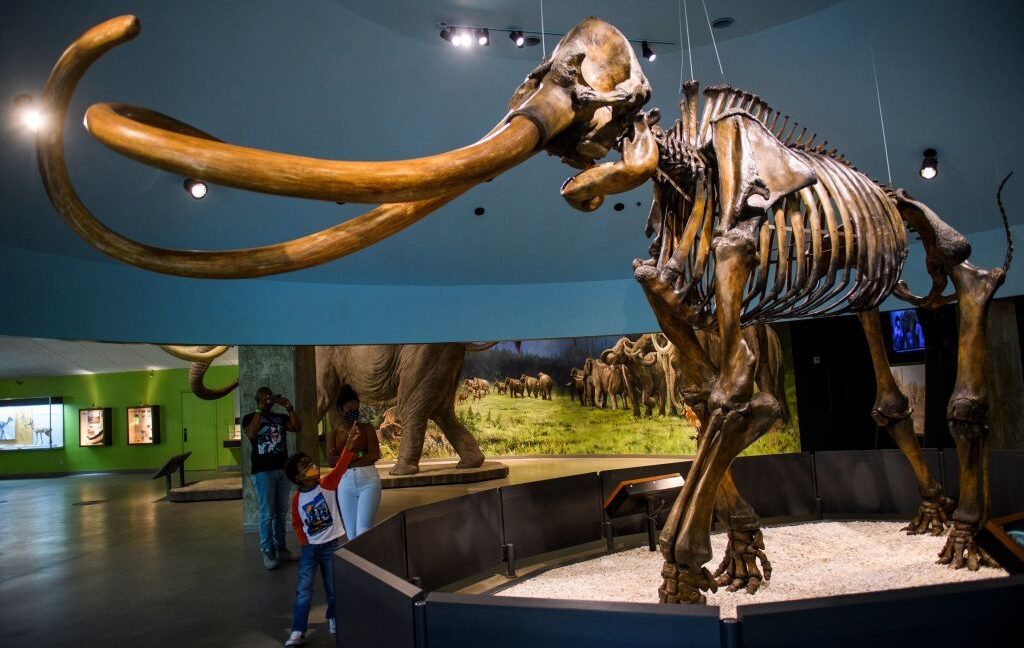Science
Central American Mammoths Reveal Surprising Genetic Links

Recent research has unveiled unexpected genetic connections among Central American mammoths, suggesting they form a distinct lineage. While mammoths are often perceived as large, hairy creatures, the reality is more complex, with various species exhibiting different adaptations to their environments. The findings indicate that mammoths in the Basin of Mexico, which includes Mexico City, have unique genetic traits that set them apart from their northern relatives.
The study, conducted by a team of Mexican and European researchers, focused on the mitochondrial DNA of mammoths unearthed in the Basin of Mexico. This area is notable for its rich archaeological finds, including over 100 mammoth remains discovered during the construction of Mexico City’s international airport. Researchers sought to understand how these mammoths relate to better-studied populations in colder regions, where DNA preservation is typically more successful.
Mitochondrial DNA is particularly useful for such studies, as it is inherited solely from the mother and exists in multiple copies per cell. This trait increases the chances of recovering usable genetic material, even from ancient bones found in warmer climates. The research team analyzed 83 samples and successfully sequenced 61 new mitochondrial genomes, with 28 providing sufficient quality for a thorough analysis.
Building a genetic family tree revealed that the mammoths from the Basin of Mexico clustered closely together, indicating a distinct genetic identity. The results showed three sub-groups within this cluster, but their placement on the broader mammoth family tree raised intriguing questions. Contrary to expectations, some Columbian mammoths sampled from northern regions appeared more closely related to woolly mammoths than to their Mexican counterparts.
This unusual finding suggests that geographic proximity may play a more significant role in the genetic makeup of these mammoths than originally thought. The researchers propose two possible explanations: either the Columbian mammoth represents a collection of hybrid populations from various locations, or the North American woolly mammoth population had numerous distinct mitochondrial lineages prior to any hybridization with Columbian mammoths.
The implications of this research extend beyond mere classification. The study challenges traditional views of mammoth evolution and highlights the complexity of hybridization events in ancient populations. As the researchers noted, more comprehensive examinations of northern Columbian mammoths are necessary to clarify the genetic narrative, particularly since DNA is more likely to have survived in those cooler environments.
The findings are set to be published in Science in 2025 and serve as a reminder of the intricate relationships that existed among ancient species. As researchers continue to uncover the genetic secrets of these majestic creatures, our understanding of their evolution becomes increasingly nuanced. The study opens new avenues for investigating the dynamics of ancient ecosystems and how species adapted to their changing environments over time.
-

 Lifestyle1 week ago
Lifestyle1 week agoChampions Crowned in Local Golf and Baseball Tournaments
-

 Science2 weeks ago
Science2 weeks agoMicrosoft Confirms U.S. Law Overrules Canadian Data Sovereignty
-

 Education1 week ago
Education1 week agoRed River College Launches New Programs to Address Industry Needs
-

 Technology1 week ago
Technology1 week agoDragon Ball: Sparking! Zero Launching on Switch and Switch 2 This November
-

 Technology2 weeks ago
Technology2 weeks agoWorld of Warcraft Players Buzz Over 19-Quest Bee Challenge
-

 Technology2 weeks ago
Technology2 weeks agoGoogle Pixel 10 Pro Fold Specs Unveiled Ahead of Launch
-

 Science1 week ago
Science1 week agoChina’s Wukong Spacesuit Sets New Standard for AI in Space
-

 Science2 weeks ago
Science2 weeks agoXi Labs Innovates with New AI Operating System Set for 2025 Launch
-

 Science2 weeks ago
Science2 weeks agoTech Innovator Amandipp Singh Transforms Hiring for Disabled
-

 Technology2 weeks ago
Technology2 weeks agoNew IDR01 Smart Ring Offers Advanced Sports Tracking for $169
-

 Health1 week ago
Health1 week agoRideau LRT Station Closed Following Fatal Cardiac Incident
-

 Technology2 weeks ago
Technology2 weeks agoHumanoid Robots Compete in Hilarious Debut Games in Beijing
-

 Health2 weeks ago
Health2 weeks agoB.C. Review Urges Changes in Rare-Disease Drug Funding System
-

 Technology2 weeks ago
Technology2 weeks agoFuture Entertainment Launches DDoD with Gameplay Trailer Showcase
-

 Technology2 weeks ago
Technology2 weeks agoGlobal Launch of Ragnarok M: Classic Set for September 3, 2025
-

 Science2 weeks ago
Science2 weeks agoNew Precision Approach to Treating Depression Tailors Care to Patients
-

 Technology2 weeks ago
Technology2 weeks agoInnovative 140W GaN Travel Adapter Combines Power and Convenience
-

 Lifestyle1 week ago
Lifestyle1 week agoVancouver’s Mini Mini Market Showcases Young Creatives
-

 Business2 weeks ago
Business2 weeks agoNew Estimates Reveal ChatGPT-5 Energy Use Could Soar
-

 Science2 weeks ago
Science2 weeks agoInfrastructure Overhaul Drives AI Integration at JPMorgan Chase
-

 Top Stories2 weeks ago
Top Stories2 weeks agoSurrey Ends Horse Racing at Fraser Downs for Major Redevelopment
-

 Health2 weeks ago
Health2 weeks agoGiant Boba and Unique Treats Take Center Stage at Ottawa’s Newest Bubble Tea Shop
-

 Business1 week ago
Business1 week agoCanadian Stock Index Rises Slightly Amid Mixed U.S. Markets
-

 Technology2 weeks ago
Technology2 weeks agoDiscover the Relaxing Charm of Tiny Bookshop: A Cozy Gaming Escape










